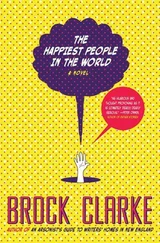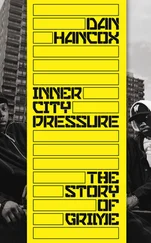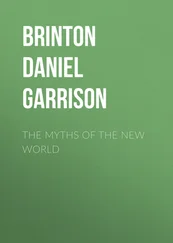When people refer to la crisis in Spain they mean the Eurozone crisis, an economic crisis; but the term means more than that. It is a systemic crisis, a political ecology crack’d from side to side: a crisis of seemingly endemic corruption across the country’s elites, including politicians, bankers, royals and bureaucrats, and a crisis of faith in the democratic settlement established after the death of Franco in 1975. A poll conducted by the (state-run) Spanish Centre for Sociological Research, in December 2012, found that 67.5 per cent of Spaniards said they were unhappy with the way their democracy works. It’s this disdain for the Spanish state in general, rather than merely the effects of the economic crisis, that brought eight million indignados onto the streets in the spring and summer of 2011, and informed their rallying cry ¡Democracia Real YA! : real democracy now.
Even before the crisis descended on Spain, the wealth gap in Andalusia was a chasm. It has been so forever. It is a region where mass rural pauperism exists alongside vast aristocratic estates – the latifundios , the South-American-style mega-estates owned by the Spanish nobility. It’s an often-repeated bit of southern rural mythology that you can walk all the way from Seville, the Andalusian capital, to the northern coast of Spain without ever leaving the land of the notorious Duchess of Alba, a woman thought to have more titles than anyone else in the world. While 22.5 per cent of her fellow Spaniards are forced to survive on only €500 a month, the duquesa is estimated to be worth €3.2 billion – and still receives €3 million a year in EU farm subsidies.
In one small village in Andalusia’s wild heart, there lies stability and order. Like Asterix’s village impossibly holding out against the Romans, in this tiny pueblo a great empire has met its match, in a ragtag army of boisterous upstarts yearning for liberty. The bout seems almost laughably unfair – Marinaleda’s population is 2,700, Spain’s is 47 million – and yet the empire has lost, time and time again.
Sixty miles east of the regional capital, Seville, ninety miles from Granada and its Alhambra, sixty-five miles inland from Malaga and the Costa del Sol, surrounded by endless expanses of farmland, sits Marinaleda. The nearest ‘big town’, with supermarkets and roundabouts and other such urban affectations, is Estepa, six miles away – and even its population is only 12,000. Marinaleda’s bus stop sees two buses a day, one going to Seville and one coming the other way, and there is no train route for miles around. But then Marinaleda is not really on the way to anywhere.
Nothing is known of any possible Roman, Carthaginian or Moorish forebears, although these peoples left quite a mark on the rest of the region. The first record of the village’s existence is in the early 1600s, as part of the Marquis of Estepa’s farmlands, when landless labourers toiling over the wheat and olive crops set up there to be closer to their work, and to the water from the nearby Salado Creek.
Driving through the south, it can be hard to spot the signs of the crisis that is ravaging it. The olive plantations cover Andalusia in a sprawling camouflage, like those big nets army cadets have to crawl under, roughly stitched together and spread out like a blanket over the gentle undulations of the landscape. Occasional wheat fields and almond or orange trees interrupt the olive rows, along with some empty fields, lying fallow for four years or more while the soil replenishes itself. Sometimes a farmhouse nestles amid this pattern, many of which are ruins from another era, ceilings gone, half-crumbled walls adorned with chipped whitewash and graffiti.
Although Marinaleda is in a part of Andalusia known as the Sierra Sur, the southern highlands, here on the broad plain of the Genil River there is only one range of any significant elevation for miles around. High up one of these hills sits Estepa; if you climb up just a little from the town centre, you can see across whole regions. On my first visit to Estepa, I met a young woman from Oregon called Robyn, who was doing a year’s English teaching in Andalusia. With some Spanish friends we went for a walk up to the top, to look down on the fields and see if we could spot Marinaleda.
The air up there was packed with invisible dust. It tingled on the tongue and constantly assailed the skin – the dust in this part of the world is impossible to ignore, especially if you’re not used to it. Robyn was more than familiar with it, but had just returned from a short holiday in the UK, and the sudden change from the all-pervasive London damp to Andalusia’s bone-dry winter air chapped her lips to the point that they were actually bleeding. She dabbed the blood away, but it just kept coming.
You have to go further south than the Sierra Sur before you encounter clear reminders that this land was once the Al-Andalus of the Moorish Caliphs. South, towards Granada and the coast, where some of the road signs are written in English and Arabic as well as Spanish, and there are advertisements for ferry tickets from Algeciras for Morocco, and North African restaurants and coffee houses. Even when Andalusia’s extraordinary history is concealed from view, a great deal has endured for centuries – in the day-to-day life and spirit of the people, and the attachment to the land.
Looking south across Marinaleda from my landlord Antonio’s whitewashed balcony, which is a heat trap even when the temperature peaks at sixteen degrees Celsius, as it normally does in winter, the only visible difference from a century ago are the spiky TV aerials, the spindly church weathervanes of this predominantly secular community. Otherwise, the residential part of the village appears the same as it ever was. The leaves on the orange trees stir reluctantly in the intermittent breeze, a chicken wanders past a man in blue overalls turning over the soil in his vegetable garden.
Little of the farming is actually done directly next to the village. El Humoso, the 1,200-hectare farm owned by the village co-operative, is several miles away. However, there is one olive oil processing plant in the village itself, providing a heavenly scent to counterbalance the exhaust fumes from the main road. And on the fringes of the village there are numerous big sheds and garages with dark, open interiors and clumsy, lethal-looking farm equipment. Tractors and trailers and things with big metal teeth and spikes – and occasionally sparks from the soldering iron. Then there is the sizeable vegetable processing and canning factory on the edge of the village, built to create more work for the co-operative in the 1990s, proudly adorned with massive paintings of pimentos and artichokes.
If you stand in the right spot near La Bodega, the restaurant on the very edge of the village, the factory building blocks out Estepa, to the south, and you really could be in the only village in the world. The hills behind Estepa, once swarming with bandits, are the only bumps in the skyline you can see from Marinaleda, and even those are usually obscured when you’re in the midst of the village. If you head further out, towards and beyond Marinaleda’s cemetery, with its twelve-foot walls and centuries of resting Carmens and Antonios, and walk through the fields to the north, on the dirt tracks across slender, underwatered streams, you can see Estepa much better: the parent town sitting prettily on the balcony surveying the region, the basin below.
It may be a household name in Spain today, but it was not until the late twentieth century that Marinaleda gained any notoriety. The village’s first victories came during a different systemic crisis, one which exists in the living memory of many: the aftermath of a fascist dictatorship. In 1975, thirty-six years after his brutal victory in the Spanish Civil War, General Francisco Franco finally passed away. He left Andalusia in a wretched state: aside from the embryonic construction and tourism industries on the Costa del Sol – the profits from which rarely enriched the locals – the region was bereft of industrial development, and of investment generally. As a region historically home to rebellious peasant farmers, scourges of the kind of central authority Franco embodied, and his enemies in the 1936–39 Civil War, he had been happy to let it rot.
Читать дальше












